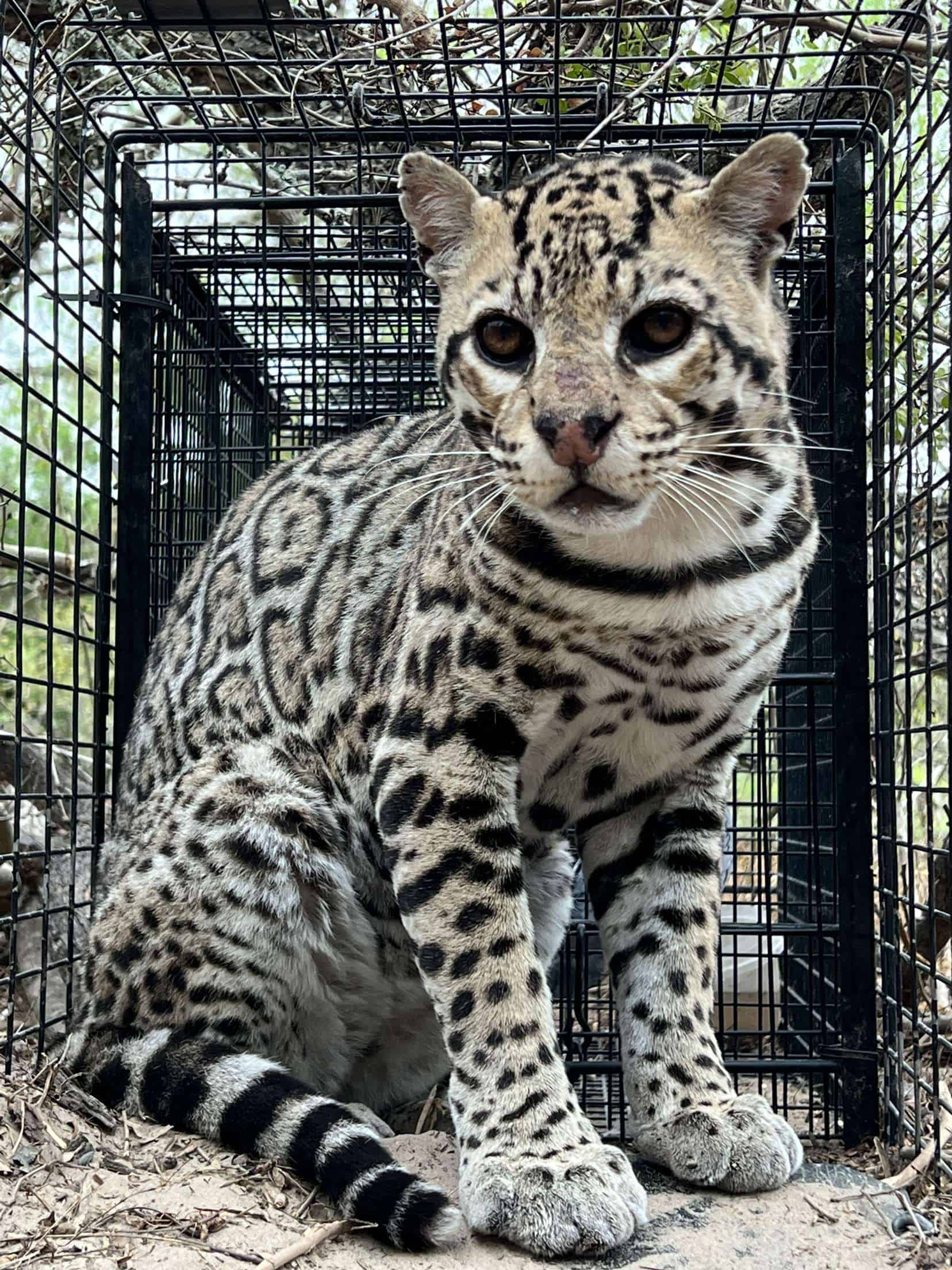Share this article
Wildlife Featured in this article
- Ocelot
- Bobcat
Moon sheds new light on how ocelots and bobcats share the landscape
The two cats seem similar, but their behaviors change with the phases of the moon
Both bobcats and ocelots roam the thornscrub of southern Texas. But while the cats may look similar and have similar diets, their behavior in the moonlight can be very different.
As part of their research into how the two species use the landscape they share, Maksim Sergeyev, then a graduate student at the Caesar Kleberg Wildlife Research Institute, and his team looked at a variety of factors, from topography to temperature. Then they wondered how the phase of the moon affects these two predators, which rely on surprise to capture their prey.
“If you think about it, it’s very different at night when it’s a full moon and there’s a new moon,” Sergeyev said.
In a recent study published in PLOS ONE, Sergeyev and his colleagues collared eight ocelots (Leopardus pardalis) and 13 bobcats (Lynx rufus). They compared their habitat selection under the full moon and during a new moon from 2017 to 2021. What they found gave them new insight into how two species that seem so similar can behave very differently on the same landscape.
“It shed new light on how they share their space,” Sergeyev said.
Ocelots are federally endangered, primarily occupying rugged private lands in southern Texas. They rely almost exclusively on thornscrub landscapes to hunt and to take shelter from the Texas heat. Bobcats use the same landscapes, but they are more generalist, Sergeyev said, using the edges more than ocelots.
Ocelots are also highly nocturnal, while bobcats are more likely to hunt in the evening. As a result, researchers found, moonlight can mean very different things to them.
Ocelots, they discovered, didn’t change their habitat selection based on the phase of the moon, but they did change their movements. Under the full moon, they moved shorter distances. That may be because the bright moonlight blew their cover from predators. The darkness of new moons, however, allowed them to travel farther without being detected.
Bobcats, on the other hand, sought denser vegetation during full moons. That’s probably because they need more cover in the brightness. But their movement remained the same, regardless of the moon.
The findings could have conservation implications for ocelots.
“The biggest source of mortality for ocelots is vehicle collisions,” Sergeyev said. Since ocelots are more on the move on moonless nights, informing the public to be more cautious on dark nights could help the species persist.
Header Image: An ocelot is captured in a box trap to be sedated and fitted with a GPS collar and released. Credit: Aidan Branney








